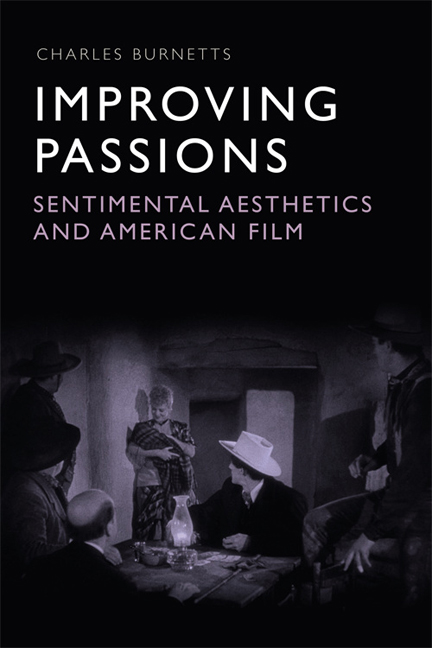Book contents
- Frontmatter
- Contents
- Acknowledgements
- Introduction
- 1 Towards a Genealogy of Sentimentalism in the Eighteenth and Nineteenth Centuries
- 2 Sentimental Aesthetics and Classical Film Theory
- 3 The Sentimental Chaplin: Comedy and Classical Narrative
- 4 Affect, or Postmodern Sentimentalism
- 5 The Sentiments of War in Spielberg and Tarantino
- 6 Sentiment and the ‘Smart’ Melodrama
- Conclusion
- Bibliography
- Index
Introduction
Published online by Cambridge University Press: 20 December 2017
- Frontmatter
- Contents
- Acknowledgements
- Introduction
- 1 Towards a Genealogy of Sentimentalism in the Eighteenth and Nineteenth Centuries
- 2 Sentimental Aesthetics and Classical Film Theory
- 3 The Sentimental Chaplin: Comedy and Classical Narrative
- 4 Affect, or Postmodern Sentimentalism
- 5 The Sentiments of War in Spielberg and Tarantino
- 6 Sentiment and the ‘Smart’ Melodrama
- Conclusion
- Bibliography
- Index
Summary
Schindler's List, the 1993 film by Steven Spielberg, tells the story of a businessman and member of the Nazi party who finds moral purpose through the discovery of his altruism towards Jews in wartime Poland both before and during the Holocaust. It was a film that famously divided the critics, particularly its tearful ending and its alleged descent into bathos and sentimentality. At this point in the film, the Schindler Jews have been saved from extermination at Auschwitz, the Allies have finally won the war, and so Schindler (Liam Neeson) decides to take his leave. Before doing so, however, Schindler tearfully berates himself for not having saved more Jews with the remainder of his wealth. This takes place in front of the Jews he has saved, including his closest aid Itzhak Stern (Ben Kingsley), who are there to present him with a collective symbol of their gratitude (a gold ring forged from a Jewish man's gold tooth) and to bid farewell to their benefactor. This scene confirms Schindler as a good man who realises the moral stakes of what he has successfully or, in his estimation, unsuccessfully achieved. The film as a whole has taken Schindler through a narrative of redemption, from the charming, egocentric, and self-serving entrepreneur at the film's outset to a heroic, self-sacrificing man of compassion at the end. For the critic David Thomson, however, this scene is excessive. He argues,
In the end, this Schindler sacrifices his all to be good, even to the point of a breakdown scene that is beyond Neeson and which is the most pointed failure in the picture.
How much truer it might have been if this Schindler had stayed matter-of-fact and jovial to the end, laughing off the chance of friendship with Stern (for, really, Stern isn't his type) and recollecting – as a rough joke – that the getaway car might have meant another handful of lives. But Spielberg won't permit that brusqueness with his big finish in sight. So Schindler becomes, simply, a ruined but saved man, a character such as Capra might have liked.
(Thomson 1994: 44–6)Thomson's mention of Capra immediately invokes a tradition of sentimental narrative and characterisation in Hollywood cinema that, for Thomson, hangs over Spielberg's film.
- Type
- Chapter
- Information
- Improving PassionsSentimental Aesthetics and American Film, pp. 1 - 21Publisher: Edinburgh University PressPrint publication year: 2017

